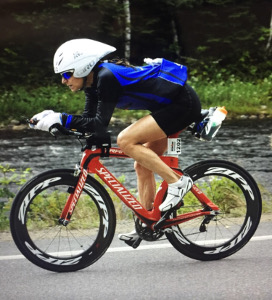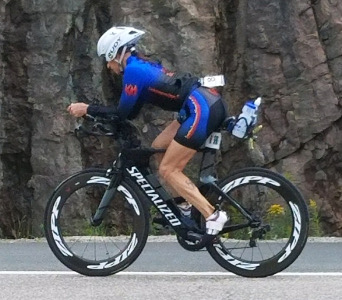
Of the many valuable lessons impressed upon me during my time working with Brett, the Doc, there is one that rings true time and time again from professional ranks to age groupers alike. It is to play the hand you’re dealt.
What does this mean? Playing the hand you’re dealt. It could for example mean any of the following:-
that you started swimming at 40, are 5’4, and not flexible so NO you will never swim like Michael Phelps
you are riding a TT bike before running a marathon so NO you will never cycle at 120 rpm like Chris Froome
your GI may not be able to absorb calories like Chrissie Wellington so NO you can’t ignore the vomiting instead slow down and play defense until you can start racing again
you’re in your 50’s dealing with a history of injuries and crashes that have left you with a body that isn’t able to bend and respond as it used so NO you can’t expect that to change with hoping.
The true lesson is that you accept your own limitations and maximize what you can do with the body you have on race day.
I was able to see this lesson truly and valiantly in action watching my athlete Claudia Kretschman race her way to a 3rd place finish in her age group at Ironman Mt. Tremblant last week.
Claudia has a long history in triathlon racing successfully in the 2000s in Kona as an age grouper and even racing back in the early 90s as a professional. But over her long career, she has faced many setbacks from injuries and crashes that have left her with body in her 50s that isn’t the same as the one she had in her 20s. An accident a few years ago resulted in severe damage to her cervical spine, her C1 vertebra was shattered in 7 places and the ligaments on both sides of her neck were shredded. This injury requiried Claudia to have a fusion from the base of her skull to her C4 and left her with very limited movement in her neck. During her comeback last year, she had another setback as a stress fracture in her heel left her once again on the sidelines. Yet despite these setbacks, Claudia was intent on not only completing her comeback Ironman in Mt. Tremblant but also on fighting to be at the top of her age group.
Claudia’s neck fusion has required her to adjust to a new style of swimming and biking. Rather than focus on what she can’t do, Claudia has improvised. She can no longer sight while swimming by lifting her head, so Claudia has adopted a stroke with a breaststroke stop every 40-50 cycles to check that she Is on course. Most athletes would use this as an excuse to accept slower swim times but not Claudia. She is pushing herself to match and surpass her previous swim times even with this new adjustment that costs her time and interrupts her momentum.
Before the neck fusion, and after, showing how Claudia has adjusted her bike position.
Likewise on the bike, Claudia is no longer able to achieve her old aero position but has had to make adjustments that allow her to maintain an aero position that suits her new limited mobility. While many would use this as an excuse for slower bike times, Claudia is continuing to push herself to get and stay as aero as she can within the severe limitations of her neck flexibility. Claudia accepts the body she has but does not use it as an excuse. She strives to continually challenge herself and raise the bar.
Finally, on the run, despite her heel injury last fall, Claudia has put in the miles and built up slowly accepting that she has to adjust her run training and style to be strong and fit to run off an Ironman bike. While it may not lead to her fastest half marathon splits it has paid off in Ironman where she is strong and efficient to the final steps of the marathon.
We can all learn from Claudia who truly exemplifies Doc’s lesson. Yes she has been dealt a raw hand by the accident and injuries that have left her with a body that is never going to be as flexible or resilient as it was in her 20s. But instead of dwelling on what she can’t do, Claudia focused on maximizing what she can do despite her limitations and triumphed racing her way to a top performance.





Comments